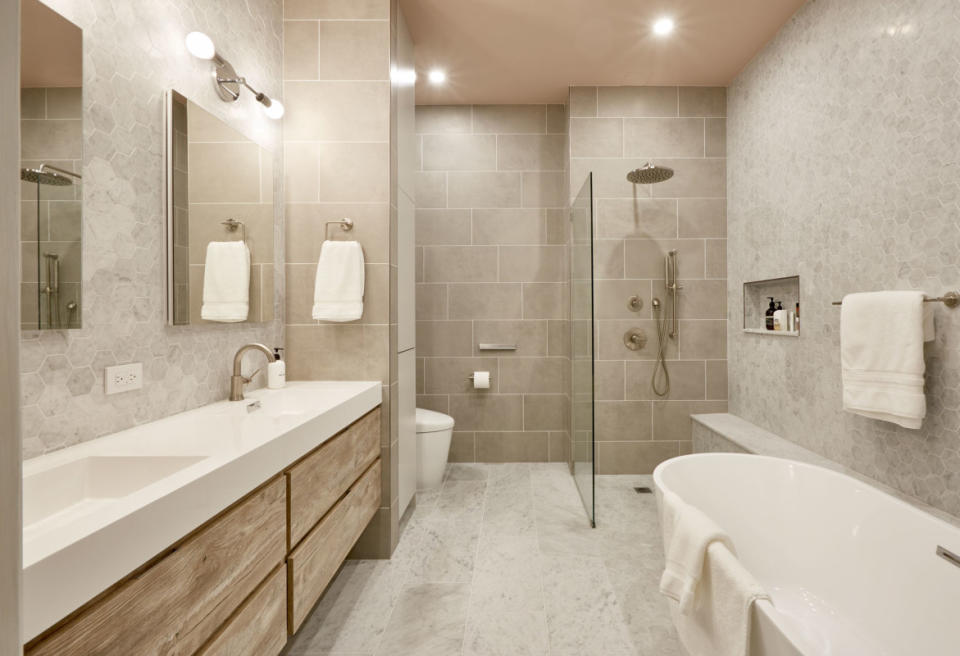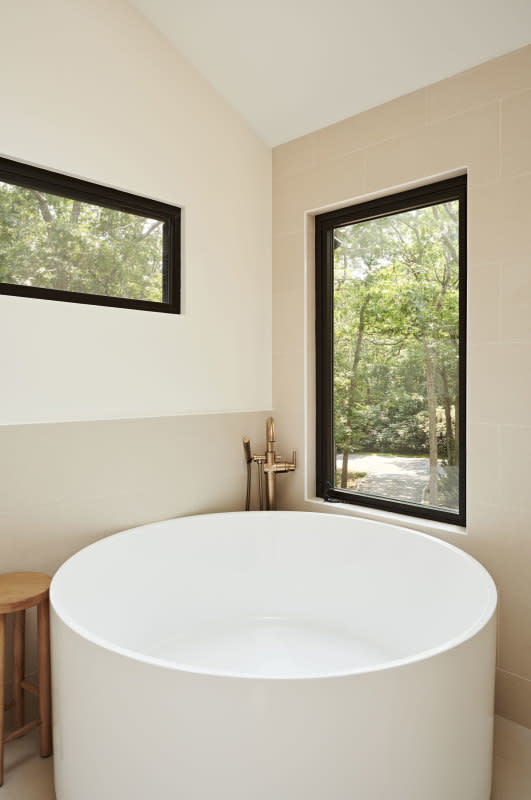Ever Consider How Your Home’s Interior Influences Your Mental Health?
Remember how you felt the last time you walked through a well-designed space? It may not have been a home; it might have been a lux hotel lounge, a new restaurant, or maybe it was the IKEA showroom. The environment that surrounds you has an almost immediate effect on how it influences your behavior and emotions, and ultimately, your physical health.
The National Library of Medicine published a study in July 2023 that proves the effects of interior materials on the restorativeness of home environments. The research led by Jing Zhao concludes that a room's spatial layout and organization can influence a positive emotional response that affects mental and emotional well-being, including cognitive function and productivity.
Enter: Space health. To learn more about the concept of Space Health, we connected with Asia Ligas, Design Experience Manager at Block Renovation. "This home living practice centers on the holistic well-being of its inhabitants," she shares. "It addresses the fundamental qualities of the space including features such as natural light exposure, noise levels, spatial arrangement, ventilation, temperatures, and materials that promote a healthy indoor environment."
Related: 1stDibs Reveals the Results of its 2024 Interior Designer Survey
‘Space Health’ vs. the Marie Kondo Method
“Marie Kondo is about the organization of items you own, whereas space health refers to the raw space as in lighting, temperature, circulation, proportions, and material finishes,” distinguishes Ligas.
She adds, "A similarity between the two includes intentional consideration of the elements that contribute to living space. Both recognize environmental psychology and the interconnectedness between your surroundings and the psychological effects that influence an overall sense of contentment and health."
When you're designing for 'space health,' keep this in mind:
Consider elements like smell, temperature, materials, colors, and lighting. Make a list of what you're consistently drawn to to narrow down your preferences.
Notice how materials, colors, sounds, and architectural features affect your mental health. Recognizing patterns that make you feel your best will help you begin to define your style.

Block Renovation
6 Ways to Implement ‘Space Health’ In Your Home
1. Increase Natural Light
Opt for warm colors (think neutral colors like warm gray or cream and white, like Benjamin Moore’s Swiss Coffee)
Integrate light-colored wood elements like birch or white oak
Place mirrors in areas with windows to strategically maximize light
When you need artificial light, choose lightbulbs with a temperature of 2700K-3000K for the ideal warm tone in your interior space. Cool colors can feel sterile (like a bad office setting).
2. Add Natural Elements
If you have windows, hang plants from the ceiling to bring a lively and natural atmosphere without obstructing the view.
Enhance your connection to nature by keeping your blinds and curtains open during the day

Block Renovation
3. Infuse Fresh Air
Good air quality goes a long way. Open windows to welcome free-flowing air. Don't reserve this action for warm weather; you can achieve a positive psychological response on a brisk winter day, too.
Use an air purifier. Healthy spaces offer an added sense of security.
Change your HVAC air filters
4. Choose Colors Wisely
Consider the effects of color psychology on mental health benefits. "Saturated colors in poorly lit rooms can create a sense of claustrophobia, and vibrant colors such as bright pink, turquoise, or lime green can create a sense of chaos." shares Ligas.
Individual preferences matter. Your personal space can still be a cheerful space. "Play with color using less permanent items such as artwork, rugs, throw pillows, or even furniture."
5. Keep it Light and Airy
Embrace a "less is more" Feng Shui design approach when it comes to furniture. Don't overcrowd or clutter a space.
Organic materials like wood furniture and other wooden elements have stress-reducing potential. White steel and polyvinyl chloride plastics were found, in Zhao's study, to have negative effects.
Avoid heavy, low-lying furniture. Opt for pieces elevated from the floor to enhance the sense of space and light contrast.
6. Avoid Noise Pollution
Large rugs not only brighten the space but also contribute to sound insulation, acting as effective acoustic panels to mitigate noise.
Hang long, simple linen curtains or bamboo blackout blinds can help reduce noise pollution. Choose white or beige to double down on the mood-lifting benefits.
Related: Emerging Trends for Home Renovation and Design
Simple Steps to Evoke A Sense of Calm
Revitalize your indoor space with a fresh coat of paint every few years. Go with warm white tones for a timeless and refreshing look.
Upgrade your lighting with high-quality fixtures that diffuse ambient light, such as paper floor lamps or wall-mounted sconces. Natural fixtures are right on point.
Use dimmer switches so you can control the brightness of your lighting.
Investing in high-quality organic cotton linens enhance a sense of comfort. White or light-colored sheets can evoke a sense of cleanliness and calm, resulting in restorative effects.
Large rugs not only brighten the space but also contribute to sound insulation, acting as effective acoustic panels to mitigate noise.

